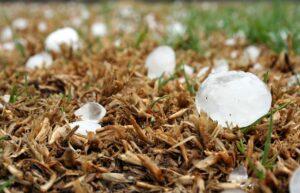This year’s defense season got off to a busy start for the national ice damage mitigation system
Already in the first week of this protection season, the National Ice Damage Mitigation System (JÉGER) operated by the National Chamber of Agriculture proved itself. During the two weeks between April 15th and 28th, it was necessary to operate the silver iodide evaporation equipment on several occasions. The results of ground generator protection are clearly shown by the fact that, while in neighboring countries larger and larger hailstones caused significant damage, in our country the thunderstorms were accompanied by hailstones the size of a grain of wheat or a pea.

(Photo: Pixabay)
The defense season got off to a busy start for the National Ice Damage Mitigation System (JÉGER). On April 15, several heat records were broken in our country, at Kiszombor station the highest temperature in the country was measured (31.4 degrees), thus breaking the highest daily maximum temperature record.
As the warm, dry summer weather of the 3 weeks before April 15 was ended by a marked cold front, several thunderstorms with the risk of ice formed in the country, which is not typical for April weather
After the arrival of the front, the temperature dropped by 20 degrees in several places, in some places in the southwestern part of the country it was 25 degrees colder compared to the previous day. The cold front brought a sufficient amount of moisture and cool air with it, thus “exploding” the atmosphere. During the two weeks between April 15 and 28, it was necessary to turn on the ground generators for a total of seven days. For the longest time, the operation of ground generators was necessary in the northern and western parts of the country. It is important to point out that the opening week immediately refuted the accusations that the ice damage mitigation system had anything to do with the lack of precipitation, since in addition to the operation of the soil generators, it rained in all parts of the country. Although temperatures were lower than usual in most parts of the country after the cooling down on April 16, despite the cold weather, heavy rains and supercell thunderstorms formed several times in our country, which were accompanied by wheat and pea-sized ice in many places. In this period, the farmers reported a total of 34 cases of ice that did not cause damage, the most detections came from the counties of Baranya and Győr-Moson-Sopron.
This cyclone caused serious agricultural damage in neighboring Romania
The weather turned out to be extreme not only in our country, but also in several areas of Europe, severe thunderstorms, which were accompanied by large ice in some areas, caused problems. In Romania, Greece, Bulgaria and Croatia, the ice also caused significant damage, and in France, Spain and Portugal, not only agricultural areas were affected, but residential buildings were also damaged by the large amount of ice.
The National Ice Damage Mitigation System (JÉGER), operated by the National Chamber of Agriculture, started its seventh protection season this year, the alert period lasts until September 30, 2024
The soil generators of the system, consisting of a total of 986 – 219 automatic and 767 manual – soil generators providing national coverage, burn an active substance containing silver iodide, which rises up into the clouds, reducing the size of the ice particles that form there. It is important to point out that the probability of the occurrence of hail cannot be completely ruled out despite the operation of JÉGER, but it can be guaranteed that the size of falling ice particles will be smaller than those that would fall without the use of the system.
NAK
Related news
The government stands by the grape growers and the winemakers
There are enough challenges in the grape and wine sector,…
Read more >Among the most competitive sectors is the poultry sector
We help the poultry sector with direct and national subsidies,…
Read more >Mandatory type certification of plant protection machines and spraying drones
The National Food Chain Safety Office (Nébih) informs the companies…
Read more >Related news
Euro zone inflation was 2.4 percent in April as well after March
In accordance with what was announced in advance, the annual…
Read more >The Hungarian Marketing Association elected new board members
The defining organization of the profession, the Hungarian Marketing Association…
Read more >An all-around convincing performance by this year’s EuroCIS
This year’s EuroCIS – the leading trade fair for the…
Read more >







